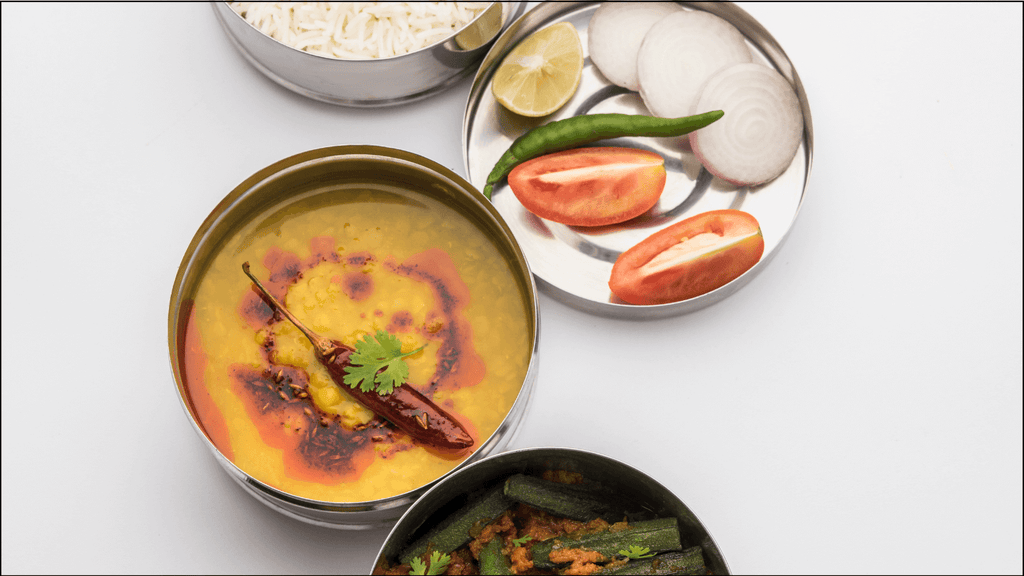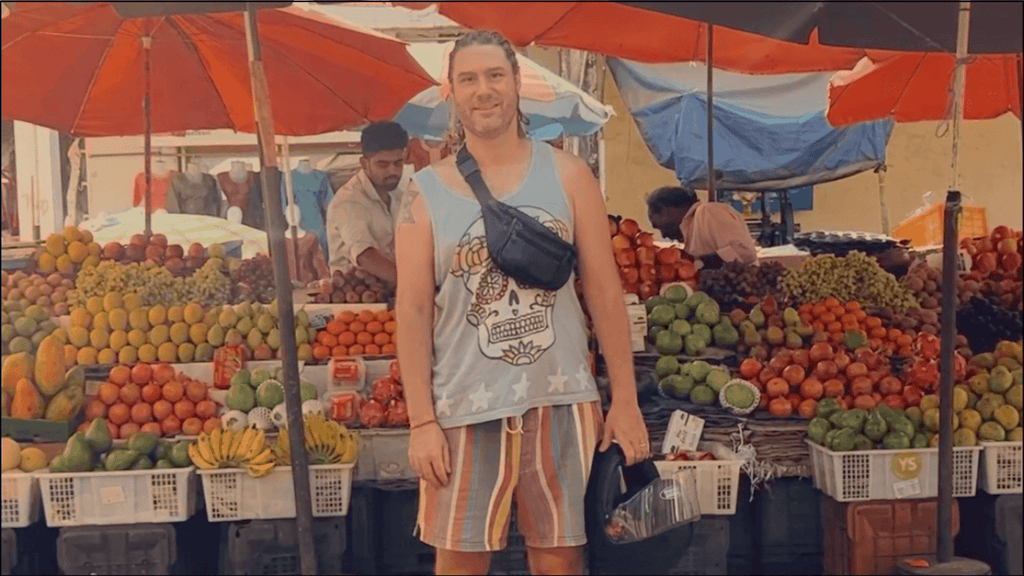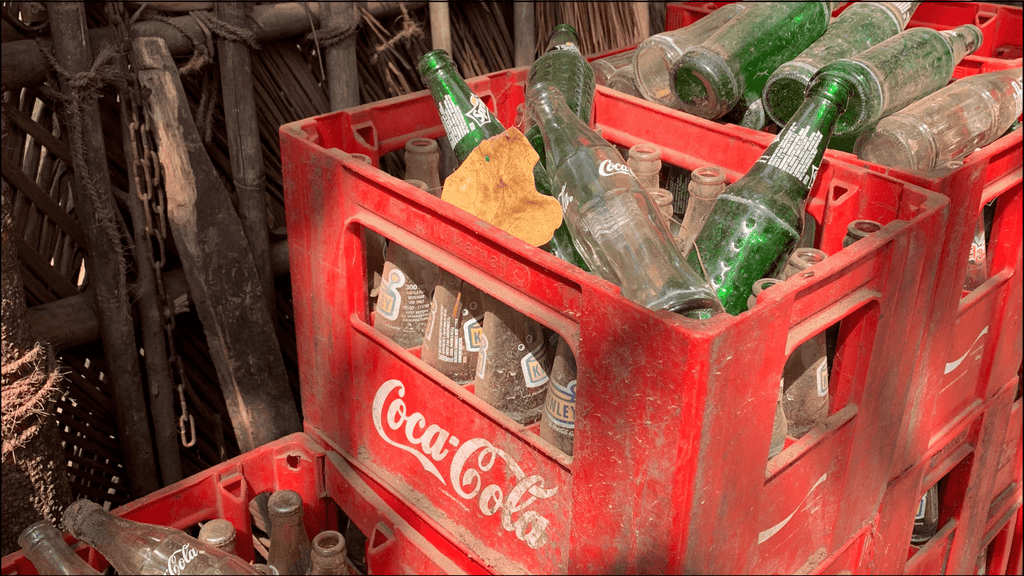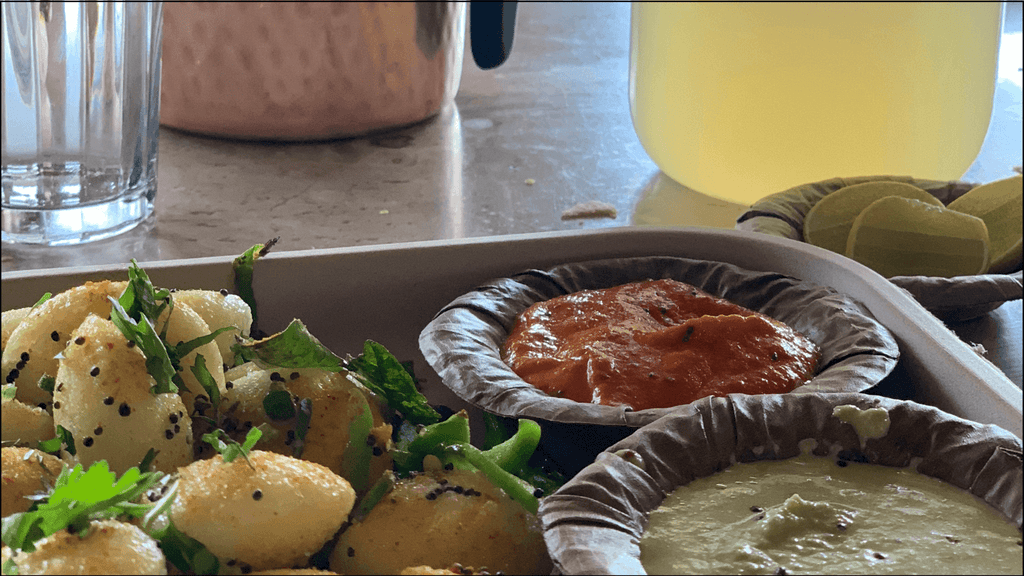Zero Waste India - a reuse culture of necessity, not privilege
I read something recently that inspired this post about plastic free and zero waste India. A sustainable fashion blogger wrote an article about how she was plastic free for a month in India, sighting some reason along the lines that because India was such a large contributor to the worlds plastic problem she was going to show us all how we should be living our lives, like her.
The post is part of a bigger trend I have been quietly watching of white people acting poorly in countries they are visiting, and in turn making us all look bad.
One of the most offensive posts I have seen to date came from the blog Postcards From Yonder. Yet another white privileged couple on a self-funded 1 year trip around the world.

These two thought it would be a great idea to film a self-indulgent music video on the Ganges (min 2:28), while wearing bindis and ultra short shorts. They then described the sacred site as "VaraNASTY".
And went on to describe the sacred religious practices they spectated as follows...
"Bodies take about 2 hours to burn, during which the family watches, chats amongst themselves, smokes cigarettes, etc. and the cremation-master-of-ceremony-guy (let’s just call him the Undertaker, cause that’s basically what he is) pokes the body with a stick much like you would poke a rib eye steak on your grill to make sure it's cooking correctly. Let me repeat that… HE POKES THE BURNING BODY WITH A FUCKING STICK TO MAKE SURE IT'S COOKING WELL. You know what, that metaphor was insensitive. Indians don’t eat rib eye steak because they don’t kill cows because cows are the Mothers of India, and therefore sacred. Let me correct myself… the Undertaker pokes the body with a stick much like you would poke some chicken breasts on the grill. Ok, that metaphor feels better."
YIKES! GO HOME.
Anyway, since then the sustainable fashion bloggers' publishing of her plastic free life in India, it has been removed. Interesting. I guess I wasn’t the only one that found it offensive. Spoiler: most of the post was her yelling at waitstaff and hotel maids for forgetting she said "no plastic straw" and not disposing of her wastebin to her liking.
Bloggers, remember, you are a guest in these countries. Please don’t stop by for 2 weeks or a month, and then believe that you have all the answers.
So, to counteract the harm of these articles, I wrote a new article, one about how India’s culture and systems already have zero waste and reuse built in.
Too Much Waste, or Lack of Waste Management?
America is great at hiding its waste. Trucks come daily to pick it up and transport it out of sight. Because waste is so quickly removed and hidden, it’s pretty hard for us to get a visual representation of how much waste we are really producing.
Recently there has been a lot of speculation about where America’s garbage will go now that China will not take it anymore… But that is a discussion for another time.
India, on the other hand, has terrible waste management. There is no garbage man here. There is no infrastructure. And, most waste is still burned. The garbage that India produces is prominent because it isn’t hidden.
So, yes. While the streets may be lined with garbage. What do you think America or Europe would look like if we didn’t have government and private employees picking up our trash? My guess is probably the same.
My own trash in India
I’ll be honest. I don’t do the zero waste thing, because I don’t have the time to agonize over it. Personally, I like convenence and I am constantly short on time, and zero waste doesn’t fit in. And you know what? I am ok with that.
Especially after seeing first hand how much waste, that the world never sees, is created while manufacturing a product. My plastic fork is not going to make a difference. And, the truth is, your plastic fork isn’t either. It is estimated that only 0.03 percent of ocean plastic is plastic straws.
Your time would be better spent writing to companies and policymakers, than debating with the local Starbucks barista.
I produce less waste naturally in India
But, I did I notice something during all my time in India. When I am here I produce way less garbage then I do in NYC. My garbage in India is basically only tissues that can't go down the toilet and plastic water bottles. In NYC it feels like every day the trash bin needs to be taken out because it is overflowing with takeout containers, amazon boxes, and other excessive packaging.
So, here are some of my thoughts about why I produce so much less waste in India. I think it's because India inherently and culturally has zero waste systems already in place.
zero waste India, FOOD
The Tiffin
What is a Tiffin? I think The Guardian sums up what the tiffin is best.
“When the British established themselves in India in the late 18th century, it soon became clear that adaptation was needed. For a start, the rituals of eating were going to have to change to accommodate the hot, languid days and nights. In the heat of the day lunch became a much lighter meal – but what to call it? Somehow, the word that seemed to stick was "tiffin", taken from the slang words "tiff", a tot of diluted liquor, and "tiffing", to take a sip of this liquor (perhaps a hint that a sahib's lunch might quite often be of the liquid variety!). Tiffin took off and "a spot of tiffin" soon became a peg on which almost any culinary indulgence between breakfast and dinner could be hung.
From these origins in British, India tiffin has evolved to create a fascinating world of its own, a world that involves a whole range of dishes and equipment and above all of the suppliers, from the tiffin-wallahs of Bombay to the sellers of spiced tea and savoury snacks who cater for busy punters on the run. Today tiffin might mean a packed lunchbox or afternoon tea, a savoury snack or a sweet treat.”
The word Tiffin evolved into the name for a lunchbox. A tiffin box is generally round, and made out of metal, with stacked containers each holding a different component of the meal. Dal, rice, chapati, pickles, etc.

In India, because of the Tiffin, and eating with your hands, reusable containers are instinctual. There is no need to go to a zero waste store, and buy a “special” kit. Zero waste in India at lunchtime just instinctively is.
India Zero Waste, GROCERY SHOPPING

Grocery shopping is a little different in India. Where I live in Goa there are 2 grocery stores. Although, they are little more than bodegas by NYC standards. Most shopping gets done in the markets. In the markets, each vendor specializes in one thing, grapes, bananas, tomatoes, fish, wheat, etc. In cities and on busy roads you will also sometimes find more “convenient” market vendors that sell a selection of goods.
When looking at all the photos of the markets, there is one thing in common. There is almost no packaging. When picking produce, there are no thin plastic bags to sort them in. Everything gets thrown into the reusable bag brought from home.
Even at the grocery store, the packaging is minimul. And, many of the prepackaged foods are locally made and have very little processing.
I never got that about American grocery stores. Why do we need our apples not to touch our bananas in the grocery bag? Separating everything into its own plastic bag just seems unnecessary.
So, the fact that food isn’t packaged when you buy it, and the options to package it yourself in plastic are not available, by default grocery shopping in India is zero waste.
India zero waste, restaurants

eggs
Even the omelet ladies get in on the action of being zero waste. Their eggs come in reusable plastic cartons. Once all the eggs have gone into omelets and yum Maggie noodles, they exchange the old tray for a new one.

bottles
Soda bottles and beer bottles are also collected and reused, and by default zero waste and plastic free. When you look at the bottles that your drink comes in they are scratched and worn out. And, there is usually a bit of rust around the cap. Bottles here feel more like sea glass than the shiny bottles that we westerners usually see. And, that is because they are used, and used, and used some more. Something not looking brand spanking new doesn’t stop India from reusing. Function always outperforms aesthetic here.
Lack of fast food encourages zero waste

McDonald's, The King, and KFC are here and can be found in every major city. But, fast food options are rare. There is no running into the hot food bar at Whole Foods or the lunch spots that dominate midtown.
And stopping in someplace to grab a quick bite means at least 30 minutes. The other day I was in a super rush. So I stopped by a restaurant and said, what is the fastest thing on the menu that you can make. The waiter responded toast. Ok. How long will that take? And, they told me 20-30 minutes. This interaction and timeline is not a unique experience, it’s pretty standard. Food prep takes a long time in India. Half an hour for some toast? Yup. Everything just takes more time here.
Lunch, is generally brought from home in a tiffin. Or, eaten out at a restaurant.
Speaking of the Tiffin...
Mumbai Tiffin Box Suppliers' Association is a business in Mumbai that delivers tiffin lunches to over 200,000 people per day. There is no seamless and excessive delivery packaging here because the tiffin wallas collect the tiffins at the end of the day to reuse for tomorrows lunch.
"fast food"
When I want something quick and on the go, I will usually stop at a street cart and get a cheese and tomato sandwich, or maybe a pav bhaji, or bhel puri.

When I grab quick food like this I eat it right there standing up in the street or on a plastic lawn chair on the little metal plate they serve it on. The stand owners then take back the dish to reuse for the next customer, or they use plates and bowls like the one in the image above that are made from plant leaves and can decompose naturally. So, the quick meal is zero waste.
Warning. Tourists. I would not recommend doing this. Your risk of getting sick is extremely high eating at places like this. I am basically immune to whatever it is here that makes people sick at this point though.
zero waste Bathroom culture
No toilet paper
Toilet paper isn’t really a thing in India.
But, you will see it in places like hotels, and restruants that want western clients. Instead, there are a couple of other options that everyone else is ok using.
Did you know that according to The Toilet Paper History website The average person uses 100 rolls of toilet paper per year (over 20,000 sheets)
First, there is the hose. It basically looks like the squirt gun that you would find in your kitchen sink. Use the toilet, spray, and you’re on your way. No TP, and zero waste.
This is something that takes Americans a long time to adjust to. Even me. Sometimes I leave the bathroom looking like I just took a shower fully clothed.
The second method is a bucket of water and a little water scooper that looks like a mini pitcher. Scoop some water with the pitcher, use your hand to splash it upwards, and your good to go.
Reusable towels
Paper towels don’t really exist either.
Instead, you will find a cloth towel to dry your hands on that everyone else that came before you used. I am definitely not a germaphobe, you will never catch me using Purell, and sometimes, ok, a lot ofthe time, I forget to wash my hands before eating. But, at first, when I saw these communal hand towels I was like ewww, no, gross, no way.
But, now I use them. Unless they look really dirty and old. And you know what? I am fine. I don’t get sick and I haven't picked up any mystery diseases from them.
Bucket bath
I have taken quite a few bucket baths in my time in more rural parts of India. Basically, a bucket that holds around 5-6 gallons of water is filled with hot water, you then take the scooper, it looks exactly the same as the one used for the toilet and pour water over yourself. And that’s it. You only get that one bucket of water. So use it wisely.
To put that into perspective the average American shower uses about 2-5 gallons of water per minute depending on your shower settings.
Homes
Cow dung floor
Hipsters and your reclaimed wood, I am about to one-up you. Floors made out of cow poop. Yes, that’s right. In most villages cow poop is processed and used for the floors of people’s homes. There is no shortage of cow dung in India, that’s for sure. And, no it doesn’t smell.
Kitchen
Have you seen a wedding registry lately? The number of kitchen appliances that exist is amazing. Personally, I don’t even know what most of them do. In India, kitchens are super basic. It turns out you don’t need the newest fanciest gadgets to whip up an amazing meal. All most Indian homes have are a few pots and pans. Grating, shreading, chopping, and kneading is all done by hand. Not only does this cut down on consumption it cuts down on electricity use.

This photo is the preparation of an amazing meal that was made for me in the tiny village of Bhawanipatna in Odisha. The power went out so we cooked over a fire. And the entire meal was made using only that one pot.
Laundry

Washing machines are rare, and I don't think I have ever actually seen an electric dryer in India, everything is always hung to dry. Most people wash their clothes in their bathroom in a bucket, or they wash them outdoors in the closest river.
By washing clothing by hand, and drying clothing using the sun, we are able to waste minimal water, and use no electricity.
Ironing
Speaking of electricity free. Ironing is done with hot coals instead of electricity. In the streets of cities and villages, you will see tailors ironing outdoors.

Repair
Things get repaired here. I have seen TV’s still in use from the 80’s. Compared to todays high res super TVs these things are ancient and barely show color. You will also see old cars driving around all rusty. The mentality is. If it works, then why replace it?
Little AC, mostly fans
Most homes in India do not have AC. The Verge estimated in 2017 that only 5% of India’s homes (a population of 7.5 billion people) do not have AC. 87 percent of Americans have AC in their homes.
Instead, in India, there is fan-conditioning.
In many places that I stay, there is no AC, and sometimes the electricity hardly works so even if there is AC it’s never actually on. In those cases, I keep myself cool by taking a shower and standing in front of a fan. It is surprisingly effective.
Transportation
Here is an example of foreigners misunderstanding culture
I read another set of comments, from yet another white girl with a lot of opinions. This time from the country coordinator of Fashion Revolution Cambodia. Really, FR? You couldn’t get a local person to represent your cause? Anyway. Juss Coneybeer writes “The people (of which 90% are women) being transported behind where I stand here. Shipped like livestock to their place of work for their 6-day working week.”
Umm. There is so much wrong with this. First of all comparing people to livestock for dramatic effect?
No.
Secondly. Cars and trucks in many of these developing countries are rare. Think of this like your neighborhood carpool. Instead of 20 cars, there is 1. Saves a lot of gas consumption if you ask me. And ultimatly it's better for the planet.
the local car pool
I have spoken about this with many friends I know that work in apparel in India. And, while there are soooo many terrible things happening. This is not one of them. Many of the employees actually like this time together, they chat and joke around. It isn’t a horrific experience for them.
And, this practice of packing cars, trucks, buses, and trains is not unique to the fashion industry. It’s cultural. If you want to change this you are asking to change an entire culture. Here is a quick snap I took a family in the back of a truck. No injustice is happening here, they are just getting a communal ride.
Also, sidebar. White ladies in developing countries...
Why do you always insert yourselves into everything? Juss, you could have easily taken this photo without yourself in it. Why are you making this all about you?
BULL CARTS, AND PEOPLE POWER

Much more eco than a delivery truck
In India, many animals like cows and elephants and even people do the work of machines.
Plastic waste

from waste to decoration
I recently saw a well-known fashion writer comment about the garbage outside of a temple, after taking video footage of people praying (btw, white people please stop doing that). I am going to leave her anonymous for now, because after I basically told her to stop being a judgy tourist, she took responsibility for how her post might have come off, and didn't do it again.
Anyway, her post made me remember this temple in Indore that had plastic waste decorations.
ZERO WASTE OUT OF NECESSITY...
Systems in India are electricity and fossil fuel free because electricity does not always work. I have been in places where I was basically living in the dark with only my flashlight. The power would come on periodically for a minute or two, then go back out.
Life can't stand still when the power goes out. That is why so many things in India are still old school, do not use power, and by default, are eco-friendly.
I wonder if, and when India has better infrastructure if these systems will change.
not privilege
Now let’s talk about something that is going to be hard for a lot of you to hear. In Western countries living zero waste is a lifestyle of privilege. A privilege that you have so much time that you can agonize over where everything you use and touch comes from and goes. Only the wealthy participate in zero waste, at least the zero waste that that receives acolades by online blogs and media outlets.
In reality, the roots of zero waste are in poverty. In having so little that everything must be used, and reused, and then repurposed until you are forced out of complete necessity to buy something new.
And, that is why what these bloggers did was so offensive. Instead of taking the time to learn about how and why the people of India live, they decided as a middle-class white Americans they could do better. They would teach us all how it should be done.
why is zero waste so white middle class in the west?
The people who are leading the zero waste movement should not be white girls like Lauren Singer and her mason jar full of EDM concert bracelets. But, people who live this life because they have to, not as a trendy choice. Ladies, step aside.
Zero waste is not about listacles of things to buy to complete your zero waste lifestyle, like mason jars, bamboo utensils, and the best reusable bags. It is about thinking creatively to use what you have.
The first Zero waste store in Goa

And, if you are looking for even more zero waste in India. Check out this amazing zero waste store in Goa, Ecoposro that is cultivating a community of even more reuse.
In Goa, an area with so much foreign tourism and seasonal residents, this place is amazing for stepping up your zero waste game. What I love about Ecoposro is that they are creating a space for local farmers and restaurants to sell their products and a platform for them to explain how their goods are made sustainably.


